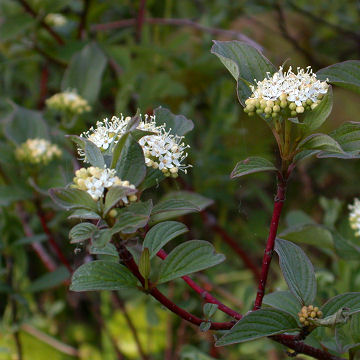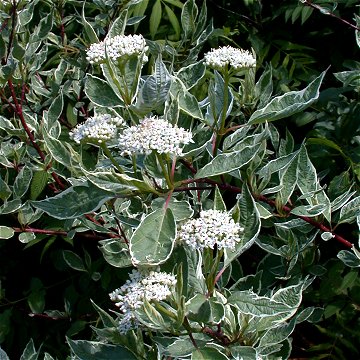

Cornus sericea - (image 1 of 4)
Taxonomy
Family: Cornaceae
Synonymous with Cornus stolonifera
Habitat
Marshy ground, calcareous fens, and shrub-carr. Also in moist swales and in bogs.
Associates
Distribution
Newfoundland west to AK, south to PA, IN, IL and northern Mexico.
Morphology
Colonial shrub to 3 m, often forming dense thickets; twigs reddish, often with the red intensifying in the winter; older bark smooth, thin, reddish-gray. Leaves opposite, ovate, acuminate, simple, entire, deep green above, lighter beneath; most with more than 5 pairs of lateral veins. Flowers small, in flattened upright cymes. Fruit white, berry-like, on red peduncles.
Notes
Flowers late May to September
Wetland indicator: Facultative Wetland
This species is similar to gray dogwood, C. racemosa. It is more likely to be found in wetlands than C. racemosa but their habitats do overlap. Usually only the youngest twigs are red in C. racemosa and they soon turn gray. The pairs of lateral veins is possibly the best characteristic to use during the summer. In the winter the bright red twigs of Red-osier really stand out.
This species is also known by C. stolonifera Michx. and some authorities consider it conspecific with the European C. alba L.

A variegated cultivar of Cornus alba
References
Gleason, Henry A.
and A. Cronquist. 1991. Manual of Vascular Plants of Northeastern United States
and Adjacent Canada. Second Ed.
The New York Botanical Garden. Bronx, NY
Swink, F. and G.
Wilhelm. 1994. Plants of the Chicago Region.
Indiana Academy of Science. The Morton Arboretum. Lisle, Illinois.
|
Michael Hough © 2004 |